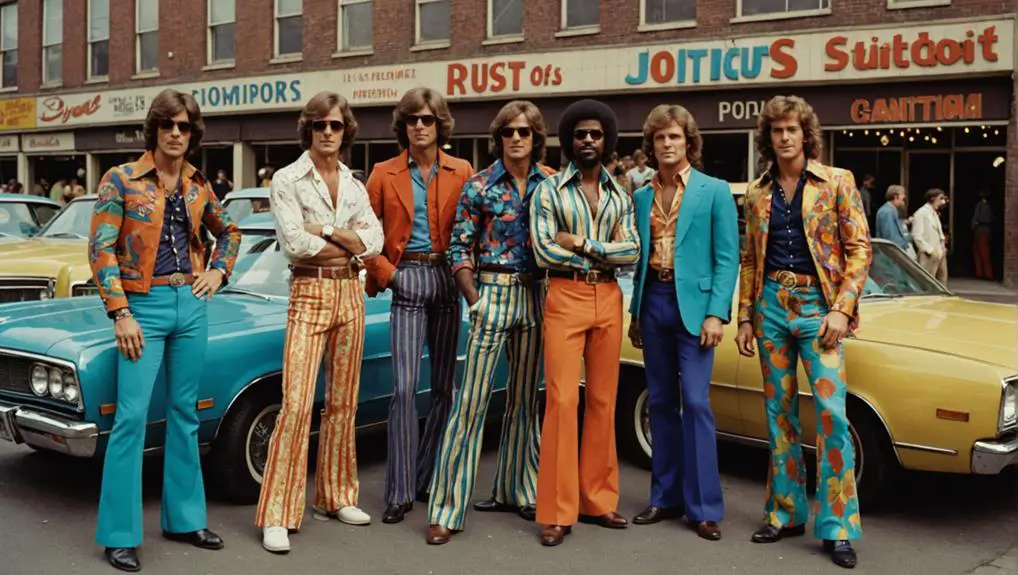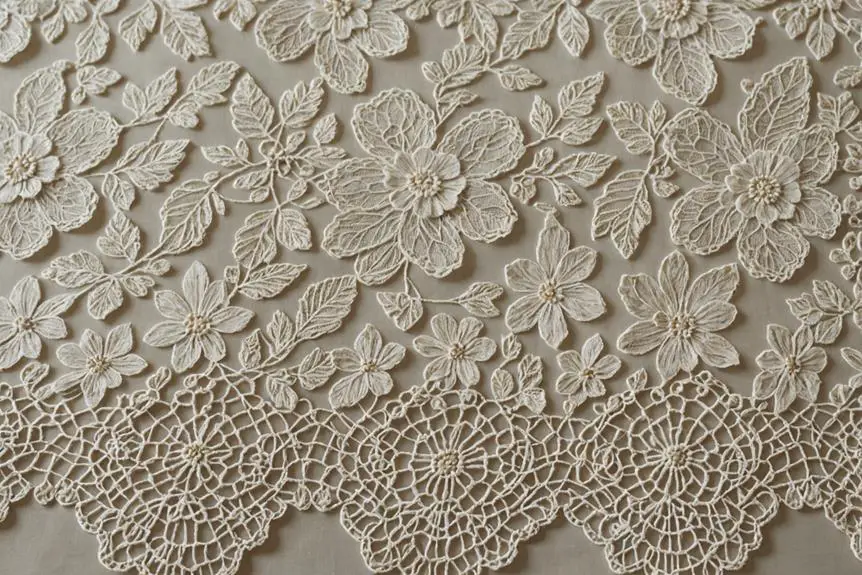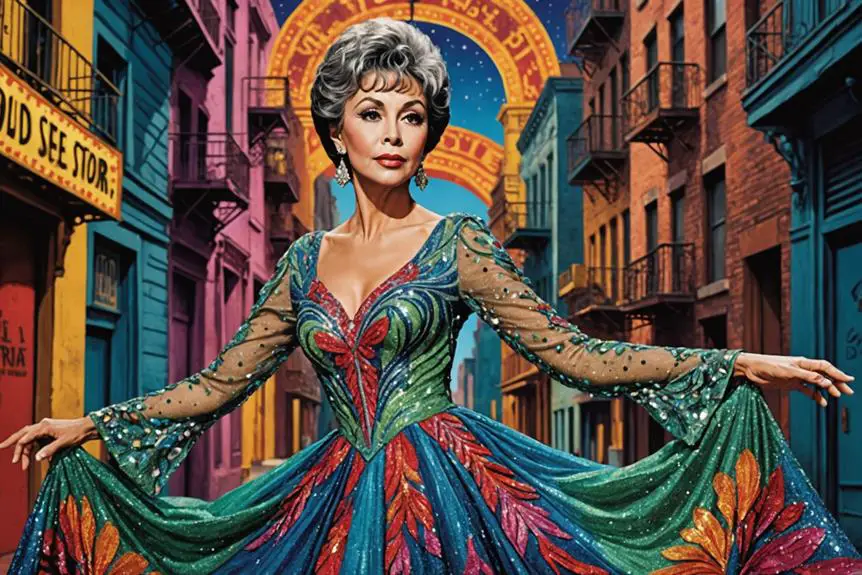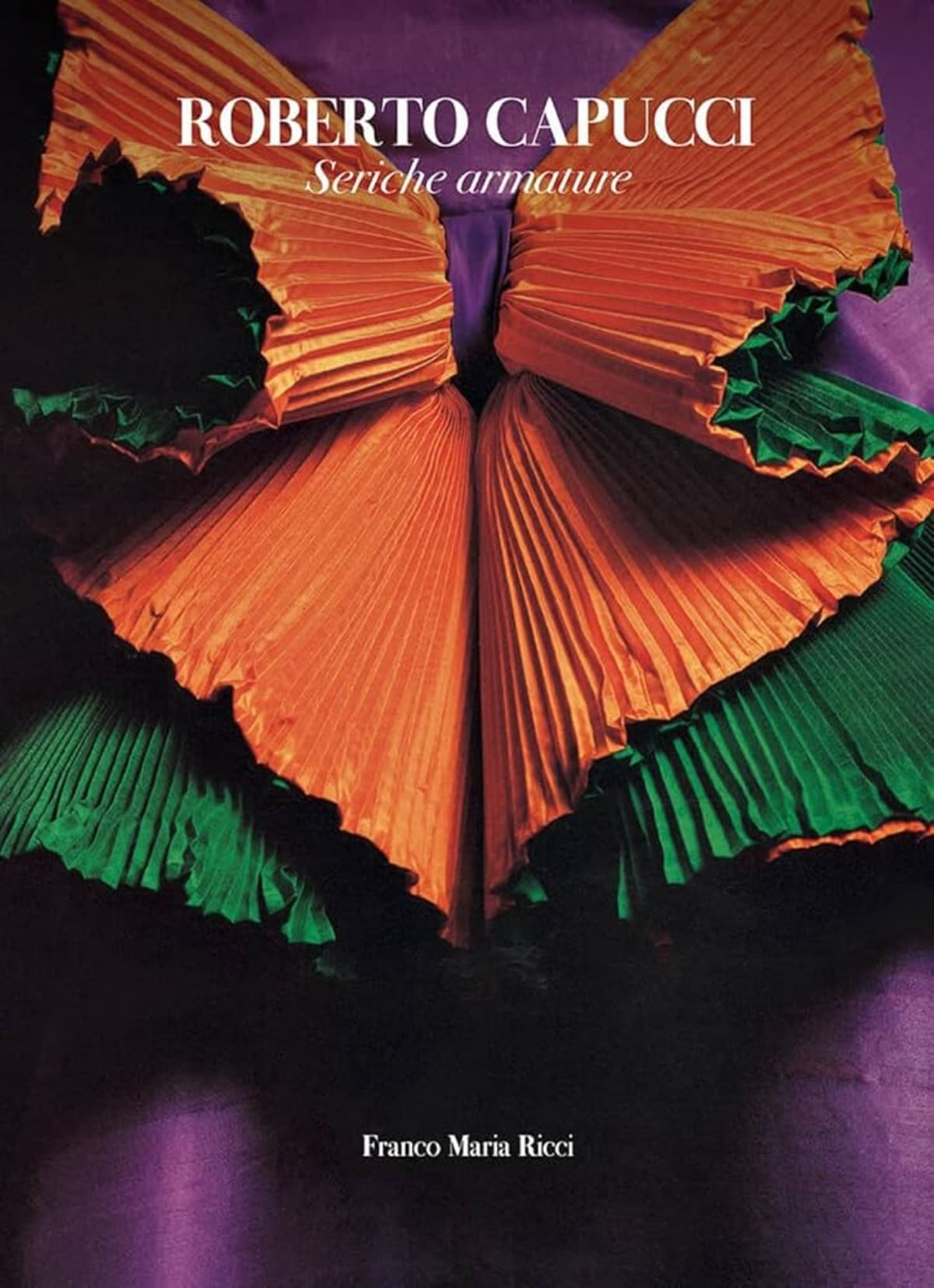In the 1970s, men's trousers showcased bold designs and diverse fabrics that reflected the era's vibrant culture. You'll find flared and bell-bottom styles dominating casual and disco scenes, while high-waisted options catered to various body types. Fabrics like polyester and corduroy added both texture and comfort, ideal for the decade's eclectic vibe. Loose fits became popular for laid-back occasions, and unique patterns like stripes and paisley emerged, signaling a shift towards more expressive fashion. As trends evolved, so did the sizing options, ensuring everyone could join in on the fun. Keep exploring the influences behind these iconic styles.
Overview of 1970s Styles
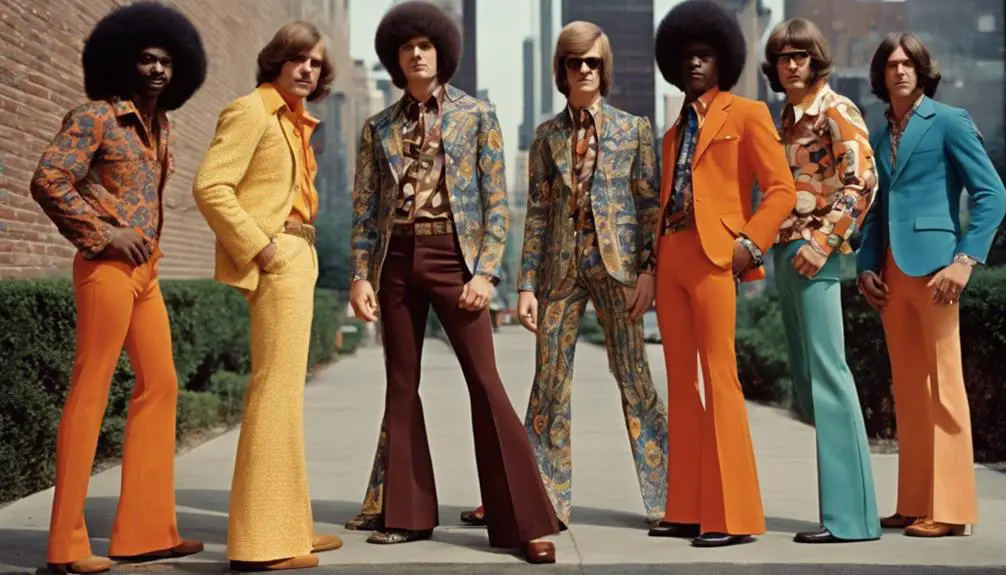
In the vibrant tapestry of 1970s fashion, wide-legged and flared trousers emerged as defining elements, capturing the spirit of an era marked by individuality and bold expression. You'd likely notice bell-bottom pants as an iconic choice, often worn in both casual settings and on the disco dance floor. These styles redefined mens pants, offering a relaxed fit that emphasized comfort while showcasing a retro silhouette. Vintage clothing enthusiasts often seek out labels from this era, such as those from Fashionbilt, known for their bold colors and patterns typical of the time. High-waisted designs became increasingly popular, appealing to various body types and allowing for creative styling. The decade's focus on unisex fashion blurred traditional gender lines, making it common to see men confidently sporting flared trousers in vibrant colors and bold patterns. Striped wool became a favored fabric, adding texture and visual interest to these already striking designs.
Music and pop culture heavily influenced these fashion choices, reflecting a newfound sense of freedom and self-expression. As you explore 1970s styles, you'll see that the combination of materials and innovative silhouettes created a unique landscape of menswear, where personal style flourished against the backdrop of societal change. The era's fashion remains a vivid reminder of the power of clothing to express one's identity.
Popular Fabrics and Materials
The vibrant styles of the 1970s weren't just about bold silhouettes; they were also greatly shaped by the fabrics and materials used in men's trousers. As you explore the trends of this decade, you'll notice how the choice of fabric influenced not only the look but also the overall vibe of the pants.
- Polyester: Dominated the scene with its ability to flaunt vibrant colors, perfect for disco culture.
- Corduroy: Offered a soft texture and warmth, commonly seen in popular bell-bottom and wide-leg styles.
- Denim: Remained a classic, evolving into various cuts that embodied casual sophistication, including flared and bell-bottom designs.
- Wool Blends: Gained traction for more formal trousers, providing durability and a polished appearance in slacks and tailored pants.
These materials, whether in mens blue or orange brown hues, allowed for unique prints like paisley and houndstooth, showcasing the era's bold creativity. The combination of comfort and style made these trousers a staple, reflecting the cultural shifts and fashion statements of the time.
Iconic Pants Designs
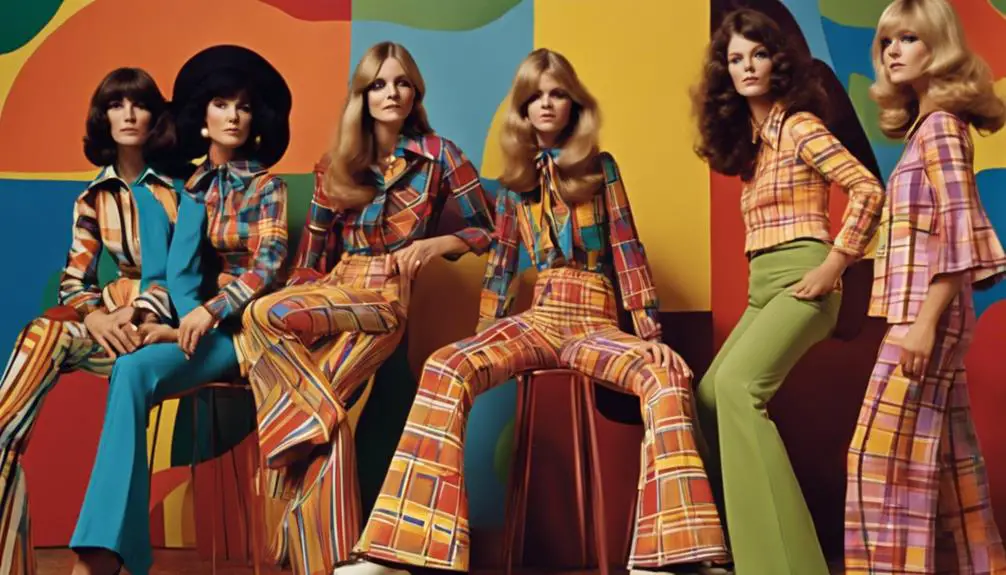
Throughout the 1970s, men's trousers transformed into iconic statements of style that reflected the cultural zeitgeist. The decade was marked by bold designs, with bell-bottom pants leading the charge. These flared-leg trousers became synonymous with disco culture, often crafted from comfortable polyester blends.
As you explore the variety of iconic styles, you'll notice wide-legged trousers gaining traction. They offered a relaxed fit and frequently showcased vibrant patterns like plaid and paisley, embodying the decade's exuberance. High-waisted designs also emerged, emphasizing a retro silhouette that appealed to diverse body types while offering comfort.
The table below highlights some of the defining characteristics of 70s trousers:
| Design Feature | Description |
|---|---|
| Bell-Bottoms | Flared legs, popular in disco scenes |
| Wide-Legged Trousers | Relaxed fit, bold patterns |
| High-Waisted | Retro silhouette, comfortable fit |
| Unique Details | Cuffed hems, stripes, metallic prints |
Fabrics like corduroy and denim exemplified versatility, ranging from casual slacks to formal options. With unique details enhancing their appeal, these trousers became standout pieces, making a statement in a decade defined by bold expression.
Sizing Trends and Fit
Comfort and style seamlessly intertwined in the sizing trends and fit of men's trousers during the 1970s. This era embraced a distinctive approach to sizing, with options ranging from small to extra-large. Common waist sizes like 28, 30, 32, and 34 inches catered to various body types, ensuring that comfort was never sacrificed for fashion. High-waisted designs became a staple, creating a retro silhouette that not only looked chic but also provided ample comfort.
As you explored your options, you'd notice a preference for loose-fitting styles, ideal for those laid-back moments. Unique fits, such as flared and bell-bottom trousers, were particularly popular, accentuating the legs and aligning perfectly with disco culture. To navigate the sometimes confusing vintage sizing, retailers often provided size guides, which helped you find your ideal fit.
- High-waisted designs for retro appeal
- Loose-fitting styles for comfort and ease
- Flared and bell-bottom styles to enhance leg appearance
- Size guides to assist in selecting the right fit
These elements combined to create a dynamic and comfortable wardrobe, making the 1970s a memorable decade for men's trousers.
Care and Maintenance Tips
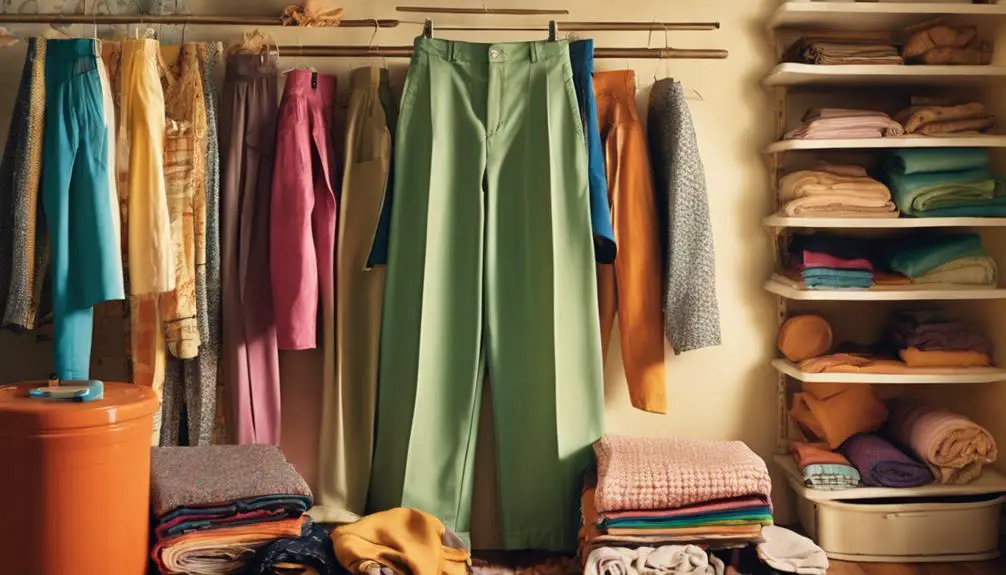
Regular care and maintenance are essential for keeping your 1970s men's trousers looking vibrant and stylish. To preserve those eye-catching colors, always wash your trousers in cold water. This simple step helps prevent fading, ensuring they retain their retro charm. When it's time to dry them, opt for air drying instead of machine drying. Polyester blends, common in 70s styles, are particularly susceptible to shrinkage and damage from high heat.
If your trousers need a bit of freshening up, you can iron them. Just remember to use a low heat setting to avoid damaging the fabric. A well-pressed trouser maintains that crisp, put-together look that defines the era.
Storing your vintage trousers properly is equally important. Keep them in a cool, dry place to protect them from moth damage and the discoloration that humidity can cause. Finally, make it a habit to regularly inspect your trousers for any signs of wear and tear. Prompt repairs can extend their lifespan, ensuring that your stylish pieces from the 70s remain as fashionable and appealing as ever.
Fashion Influences of the Decade
The 1970s marked a vibrant shift in men's fashion, with numerous influences reshaping trouser designs and styles. Disco culture brought flared and wide-legged trousers to the forefront, crafted often from luxurious polyester. Influential figures like David Bowie and John Travolta introduced bold colors and patterns, encouraging you to express your individuality through fashion choices. This decade also saw the emergence of unisex fashion, blending traditionally masculine and feminine styles, reflected in relaxed fits and eye-catching designs.
Key fashion influences of the 1970s include:
- Disco Culture: Flared trousers became synonymous with the nightlife scene.
- Iconic Celebrities: Stars like Bowie and Travolta popularized expressive colors and patterns.
- Unisex Fashion: Blending of styles allowed for greater self-expression.
- Eco-Consciousness: Vintage clothing emerged as a sustainable choice, appealing to the counterculture movement.
The cultural shifts from the feminist movement and the lingering effects of the 1960s counterculture pushed men's fashion toward a more individualistic approach, making trousers not just a wardrobe staple but a statement of personal identity.
Vintage Pants Market Insights
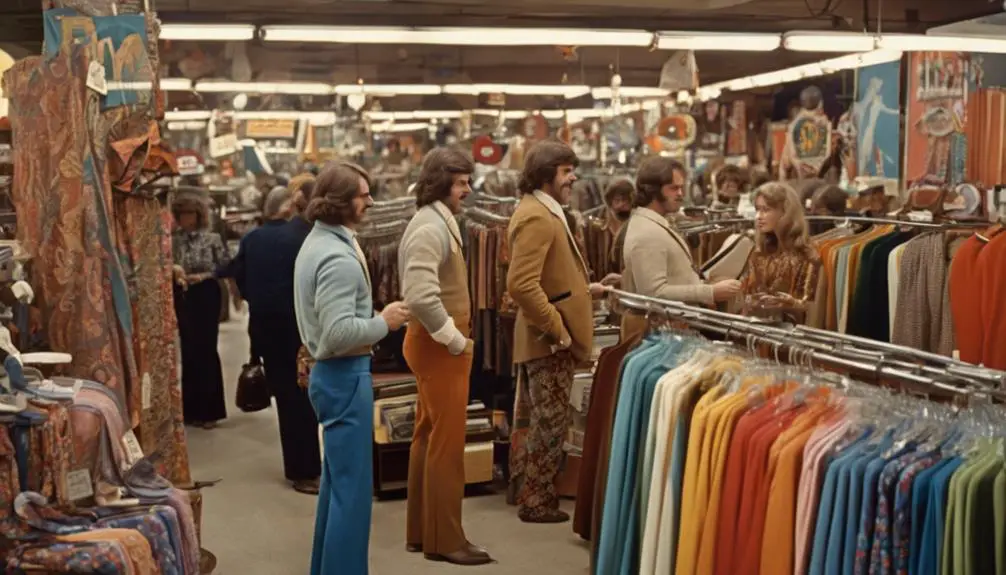
As the vibrant influences of the 1970s continue to resonate, the vintage pants market has emerged as a fascinating niche for fashion enthusiasts and collectors alike. This market showcases a diverse array of styles, from iconic bell-bottoms and wide-legged trousers to high-waisted designs. Understanding the importance of vintage tag identification can enhance the collectible value of these garments. Materials like polyester, denim, and corduroy dominate the offerings, reflecting the era's distinctive aesthetic.
Pricing in this market is equally varied, with vintage pants available for as little as $5.00 at auctions to over $385.00 for rare designer pieces. Such a wide range indicates the collectible value associated with these garments. Auction formats are especially popular, allowing buyers to snag unique items at competitive prices, often starting with low bids, like $20.00 for plaid dress pants.
Shipping costs, generally between $4.55 and $11.60, can influence your overall purchasing decision. Additionally, the demand for deadstock vintage pants—those unsold from the 1970s—is on the rise. Collectors are drawn to these pieces for their unique designs and quality craftsmanship, further driving their value and solidifying the vintage pants market as a dynamic and thriving sector in fashion.
Cultural Impact on Fashion
Amid the vibrant tapestry of the 1970s, cultural shifts profoundly shaped the fashion landscape, particularly in men's trousers. The era's ethos revolved around self-expression and individuality, driven by the disco culture and iconic music figures. As you explore this period, you'll see how these influences led to a transformation in men's fashion choices.
- Disco Culture: Vibrant colors and flared pants became symbols of the nightlife and hedonism.
- Music Icons: Artists like David Bowie and the Bee Gees inspired bold, wide-legged trousers and flamboyant patterns.
- Unisex Fashion: The blurring of gender boundaries encouraged relaxed styles, with high-waisted pants embraced by all.
- Cultural Movements: Counterculture and civil rights movements fostered rebellion through unique styles, such as bell bottoms and leisure suits.
Television and film also played pivotal roles, with productions like "Saturday Night Fever" cementing polyester fabrics and eye-catching designs in the public's imagination. As you reflect on these trends, consider how they not only defined an era but also challenged societal norms, leaving a lasting legacy on men's fashion.
Frequently Asked Questions
What Kind of Pants Did Men Wear in the 70s?
In the 70s, men wore wide-leg trousers with bold patterns and vibrant colors. You'd find flared pants and high-waisted styles, blending comfort and flair to reflect the decade's unique cultural shifts and fashion trends.
What Trousers Were Popular in the 70s?
In the 70s, trousers reflected bold individuality. You'd see bell-bottoms, wide legs, and vibrant colors dominating the scene. Fabrics like polyester and denim featured unique patterns, catering to the era's expressive and eclectic fashion trends.
What Were Wide Leg Pants Called in the 1970s?
In the 1970s, wide leg pants were often called bell-bottoms or flares. You'd see them in vibrant colors and patterns, capturing the era's spirit and reflecting a bold, carefree fashion attitude that embraced comfort and style.
Did Men Wear High-Waisted Pants in the 70s?
Yes, you'd find men embracing high-waisted pants in the 70s. They paired these with wide-leg designs, creating a bold silhouette that emphasized comfort and style, reflecting the vibrant fashion trends of that era.
